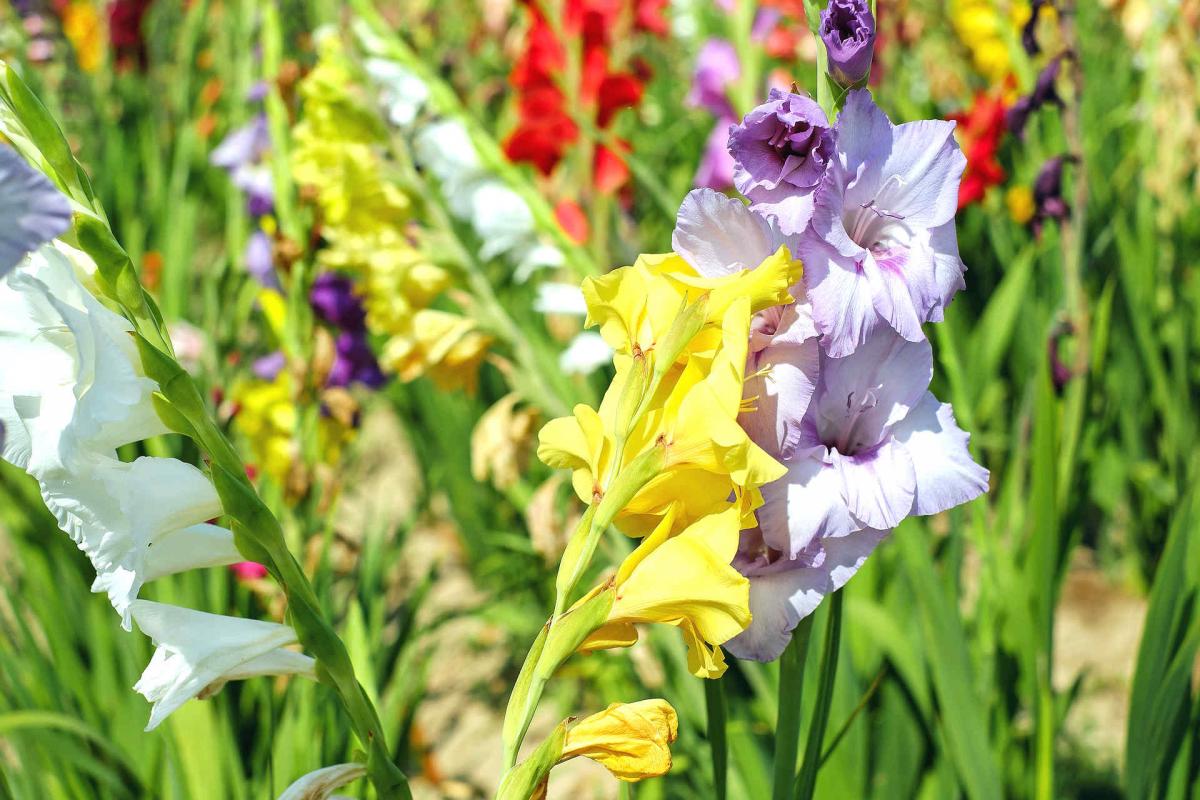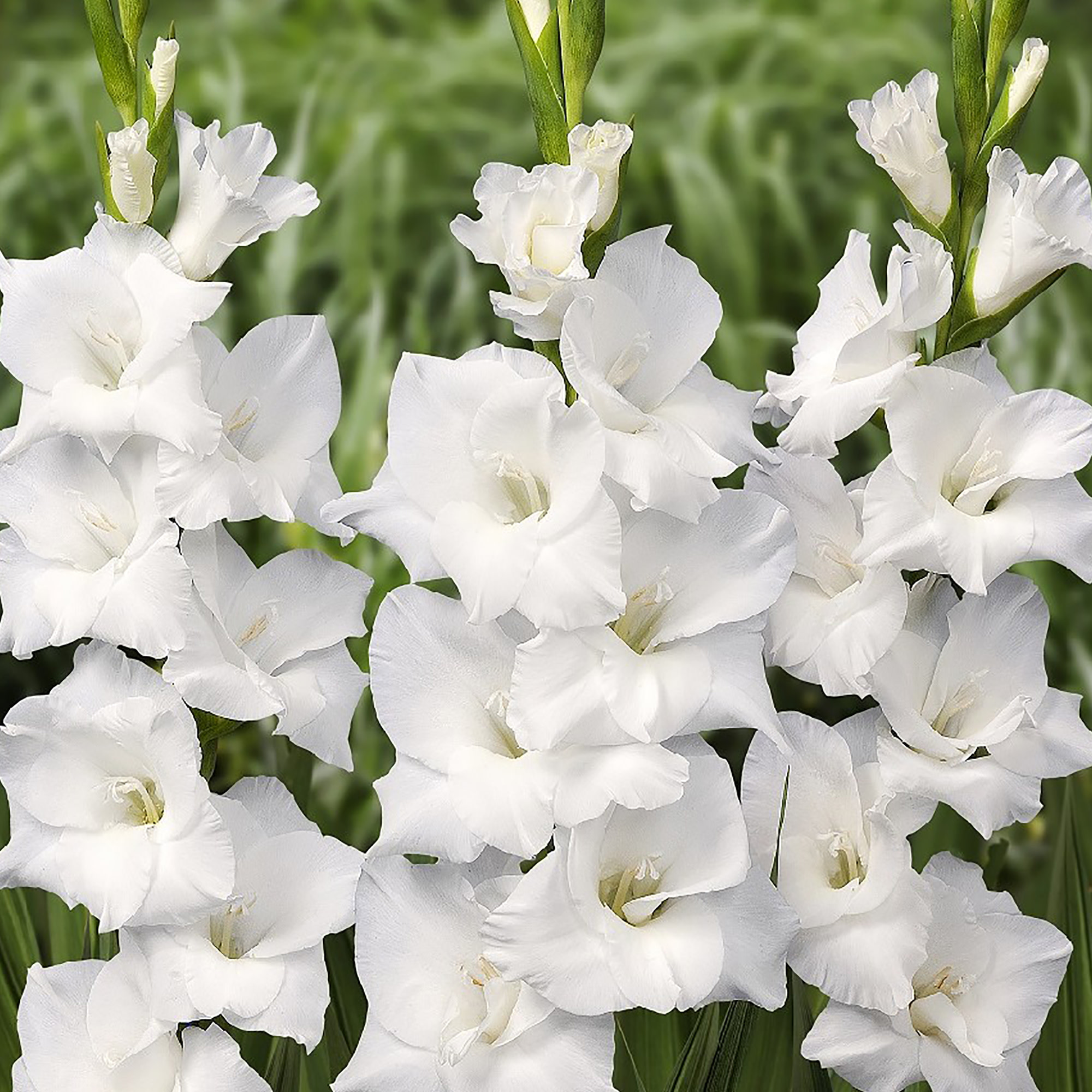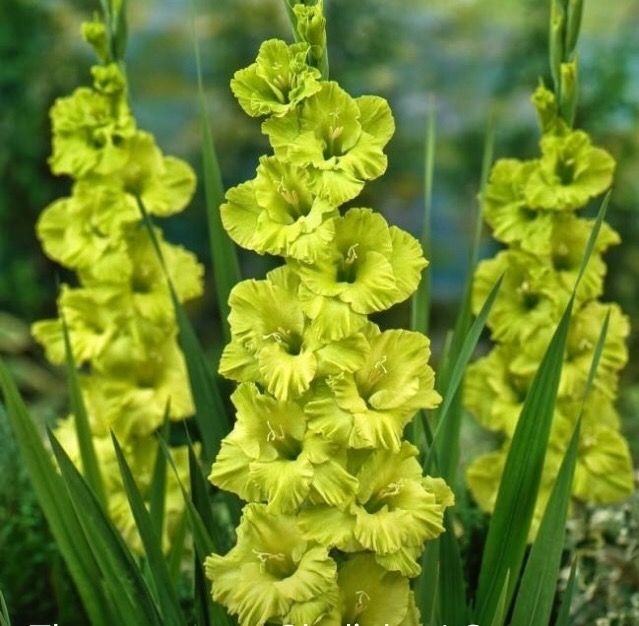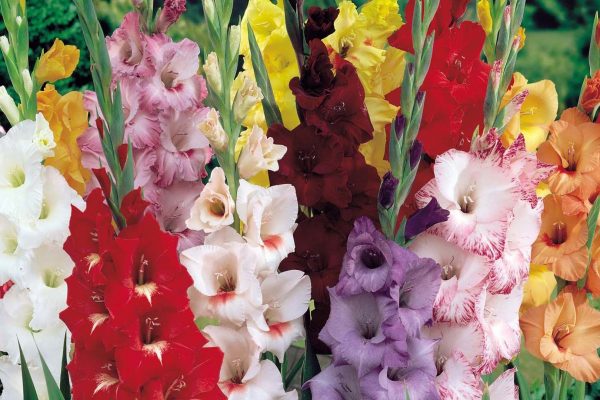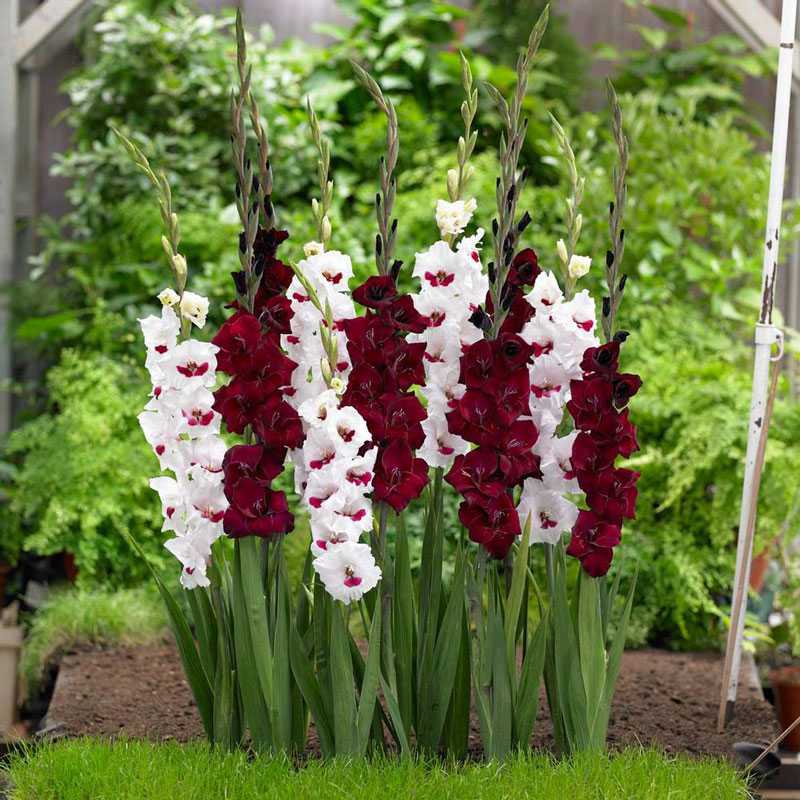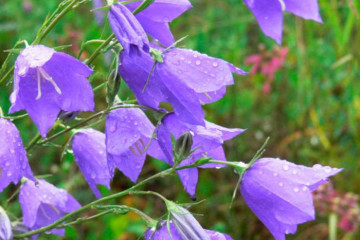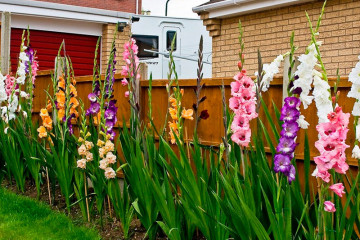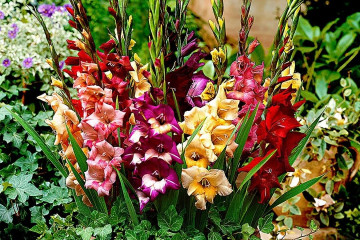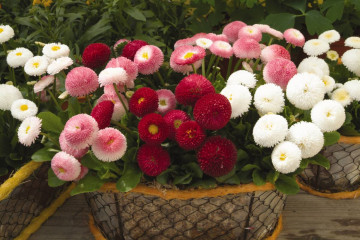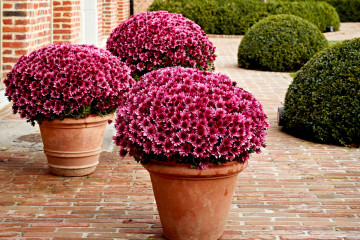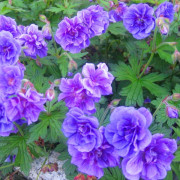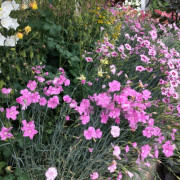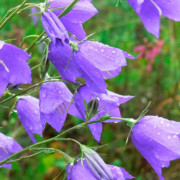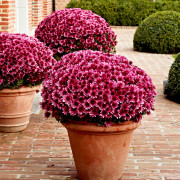Perennial Gladiolus flowers - description
Content:
What is gladiolus? The royal splendor of the flowering of this plant will not leave anyone indifferent. The gracefulness and exquisite shades of petals attract the eye and brighten life. Fantastic color combinations inspire the envy of the artist. Florists do not stop creating all new wonderful varieties of this amazing flower.
What gladiolus flowers look like
Gladiolus flowers belong to the Iris family. Gladiolus is a perennial flowering corm plant. The growing area is the subtropics and tropics of the African continent, the Mediterranean, southern Europe, the Caucasus, Central Asia. Most of the cultivated plant species were obtained by crossing African and European species.
What does a gladiolus look like? It has 40-80 cm long xiphoid green leaves, pointed at the ends, growing from the root. They close around a dense, straight stem up to 1.5 m high with an inflorescence in the form of an ear, located in its upper part. The number of flowers can reach 20 pieces, their density is rare and dense. The size of a flower with six funnel-shaped petals is from 5 to 15 cm. The petals are ordinary or corrugated, curved outward. The palette includes all colors, from white to deep purple. There are monochromatic flowers and those in which several shades are combined.
Popular varieties
The most popular are tall hybrid varieties with large flowers. By the shape of the flower, they are divided into:
- Butterfly-shaped - have closely spaced flowers with the original coloration of the pharynx.
- Primrose - up to 80 cm high, flowers are rare. The upper petal is up to 8 cm in diameter, its perianth overhangs like a hood.
Gladiolus flowers are divided in size into 5 classes with indices 100-500:
- (100) Miniature - less than 6.5 cm. Height - up to 60 cm, in a triangular or primrose inflorescence of 15-16 small flowers with velvety, often corrugated petals. They are bred for growing in containers. The smallest are Small Walder (small miracle) and Wee Walder (tiny miracle) with pink flowers up to 5 cm.
- (200) Small-flowered - 6.5-9 cm, in beauty they are not inferior to varieties with large flowers. The Cezanne variety has light red flowers with a yellow pistil and a dark spot on the petal. Bright yellow focus with cherry spot. These two classes have advantages in comparison with large-flowered plants: they have more open flowers at the same time, the stem does not need a garter, the flowering time is early, they are resistant to hot sun and rain.
- (300) Mid-flowered - 9-11.5 cm. Variety Albit with a greenish spot on white petals. Arabienne night has juicy burgundy-crimson flowers. Elegy has velvety dark crimson.
- (400) Large-flowered - 11.6-14 cm. Presented by varieties: Amethyst - pink with a dark red spot and dashes, Don Quixote flowers are velvety dark cherry in color.
- (500) Giant - more than 14 cm. They have powerful stems covered with large flowers in the form of tropical butterflies, for which they got the name - gladioli butterfly.They begin to bloom in early summer and remain in bloom until mid-fall. White Prosperity has a spectacular white flowers 15 cm in diameter, inflorescence height up to 1 m.
Unusual delicate greenish-yellow color of Green Star flowers for the original look, long flowering among flower growers received the title of "stars". The arrow height may exceed 1 m.
Annuals
Gladiolus is a perennial plant, but it does not tolerate cold well. The frosty winter in Russia is not suitable for growing gladiolus as a perennial plant. In the fall, it is dug up, stored until spring, and planted again, growing as an annual.
Perennial
Wild gladioli are perennial. Gladiolus (or skewer) tiled (Gladiolus imbricatus) perfectly tolerates the winter near Moscow, even without shelter. With good care, it produces several inflorescences of 3-7 flowers of pinkish or purple-violet colors.
Gladiolus byzantine (G. Bizantinus) is also hardy. The flowers are small purple, turning into crimson with a white vein. Having planted in open ground, it does not need to be dug up in the fall and covered for the winter.
Dwarf
These species have advantages: they are compact, bloom early, do not need support. They have a stem height up to 60 cm, asymmetric flowers up to 10 pieces per inflorescence.
There are single-color varieties:
- "Charm" - pink;
- "Jade" is yellow-green.
And two-tone:
- "Nymph" is red and white.
- "Sunmaid" - mauve.
By color
By color, hybrid varieties are divided into:
- Red gladioli - Baccarat, Zulu.
- Burgundy - Black Velvet.
- Pink - Prague.
- White - Tampere.
- Greens - Green Star.
- The yellow ones are Jester.
- Brown, smoky - Torino.
- Blue - the Gates of Paradise.
- Black - Ebony Beauty.
In addition to those listed, there are raspberry, salmon, orange, lilac and purple, blue.
By the shape of the edges of the petal
By appearance, the petals can be:
- Simple;
- Terry;
- Folded;
- Corrugated;
- Draconic.
By the arrangement of flowers in the inflorescence
The arrangement of flowers is:
- Single row;
- Double row;
- The next one is zigzag, in a spiral.
By flowering time
Varieties are divided according to the time when gladioli bloom, the countdown starts from the day of planting:
- Early flowering - flowering begins at 71-74 days.
- Early - bloom on the 80th day after planting:
- "May Day" is a velvety two-row inflorescence of intense red color.
- "First Snow" - pure white flowers with white stamens.
- Medium - begin to bloom on the 90th day. For example, "Moscow white stone" - strongly corrugated white flowers with a creamy center.
- Late flowers bloom 100 days after planting. "Heaven" is a strong corrugation with large folds of flowers with rich crimson lower petals and juicy tints on the upper ones.
Flowering period
When do gladioli bloom after planting? The flowering time depends on the variety, the climate of the region, and the planting time. When do gladioli bloom? Early varieties bloom in late July, middle ones - in late August - early September. Late varieties are covered with inflorescences in late September - early October. Planting early allows for early flowering, late flowering is expected.
How to speed up the flowering of gladioli
You can speed up the flowering of gladioli by planting the bulbs on seedlings in the ground. This method of cultivation gives an earlier flowering, and the inflorescence is powerful, its color is brighter.
In addition, the planting material is soaked in a solution of ash and trace elements that are part of:
- Boric acid - boron.
- Potassium permanganate - potassium, manganese.
- Copper sulfate - sulfur, copper.
- Magnesium sulfate - sulfur, magnesium.
- Zinc sulfate - sulfur, zinc.
This method provides the plant with enough nutrition to start flowering 2 weeks ahead of schedule.
Flowering plant care
Bulbous and root-tuberous plants require almost no maintenance, which cannot be said about gladioli, which are waiting for constant attention. Care includes:
- Regular moistening of the soil to a great depth.
- Loosening the soil and weeding.
- Top dressing.
- Garter of high grades.
How to prolong flowering
To enjoy the flowering longer, not all bulbs are planted at the same time, but with an interval of 15 days, then the flowering period will last.
Cut for a bouquet
You can cut the inflorescence in the phase of the half-opened first bud. At moderate temperatures and in cloudy weather, cutting is carried out at any time of the day. Correct cutting in hot weather is done early in the morning or in the evening using a sharp knife.
Basic rules for growing
There are some rules by following which you can achieve success in growing a flower:
- The landing site is changed every 2 years.
- When transplanting to another site, a place with soil of a type that is different from the previous one is selected.
- Choose a bright, ventilated place.
- Land-adapted varieties are planted.
- Maintain correct planting depth.
- Plants are watered and fed.
- They regularly loosen the soil, remove weeds.
Seat selection
The gladiolus flower is a sun-loving plant. Shade and partial shade will make it fragile and small, flowers - weak, or even destroy it. The land needs a loose, suitable soil - semi-sandy, semi-loamy or black soil, with low acidity. An excellent "predecessor" - legumes, which enrich the soil with nitrogen and will protect against wireworms. The site is freed from weeds and roots.
When can I plant
They plant gladiolus in a sufficiently warm ground: at a depth of 10 cm, the temperature should be 10 ° C, from April to mid-summer, depending on the region.
What is the depth to make the beds
The bulb is planted to a depth equal to three times its diameter, approximately 15 cm. The planting depth depends on the density of the soil, its composition: the denser it is, the shallower the corms are planted. Accordingly, the depth of the bed will be different, but it should be slightly deeper than the planting depth.
Gladioli care
Proper care of gladioli promotes normal growth and lush flowering. It includes:
- Thorough watering, sufficient soil moisture.
- Weeding and loosening.
- Top dressing using liquid mineral fertilizers.
- Digging and storing corms before planting.
Watering
The first time after planting is watered every 2-3 days to form a peduncle. In dry times, they water every evening, simultaneously loosen and remove the weeds. It is advisable to use rainwater or settled water. Watering in the aisles or in advance prepared furrows, and not the plants themselves, a sufficient rate of water is 10-12 liters per square meter.
Usually watering is carried out once a week in the early morning or evening. So that after watering does not form a crust, the soil is loosened to a depth of 5-6 cm, while hilling the plants.
In dry times, watering is carried out in 3-4 days, otherwise the peduncle will become lethargic, and the flowers will wither without blooming. The roots of gladiolus are located at a depth of 35 cm, at this depth you need to moisten the soil, surface watering is not suitable for the plant.
Weeding
Particular attention must be paid to weeding during the emergence of sprouts so that the weeds do not drown the seedlings. During the season, the site is weeded 3-4 times.
Spraying
After the appearance of the first leaves, the seedlings are sprayed. Use solutions to kill thrips, whiteflies.
Garter
After the buds appear, the arrows are tied to the pegs so that they do not break under the weight of the flowers.
Top dressing
Top dressing is carried out 5 times per season. When the first leaves appear, fertilizers containing nitrogen are applied to grow the green mass. After the appearance of 6 leaves, fertilize with potassium-phosphorus compounds. During the formation of buds, top dressing is done for the third time, during flowering - the fourth dressing, the fifth - after cutting off the stems of faded gladioli.
It is better to feed the plants in small portions, simultaneously with watering. Poultry droppings are used as organics, pouring water over it and infusing for 10 days.
It is useful to carry out foliar dressing with aqueous solutions of boric acid, potassium permanganate or mixtures of trace elements.
Possible growing problems
The main danger is represented by diseases, fungal and bacterial, and insect pests.
Pests
Invasions of such pests as thrips, whiteflies, nematodes, and May beetles are more often annoying. Treatment of plants with karbofos will help to destroy pests. They give planting results next to the gladioli of calendula, onions, and garlic.
Diseases
Gladiolus suffers from fungal diseases (this is rot, bacterial scab), an infectious disease - botrytosis, viral diseases (this is mosaic, jaundice, ring spot).
The best remedy against diseases is their prevention: proper storage of planting material, use of disinfectants, destruction of diseased plants, disinfection of the soil. To combat diseases, fungicides, potassium permanganate solutions, and copper-containing preparations are used.
Signs of improper care
Violation of cultivation techniques, dense planting, inappropriate soil type, rare digging of the site, the preservation of plant residues and damaged plants on it lead to the appearance of diseases, contribute to the appearance of pests. Lack of flowering, nondescript sluggish look of gladioli are the results of violation of storage conditions for corms, untimely treatment of plants from pests.
Compliance with the rules of care guarantees lush flowering and a healthy look of plants. A child cannot cope with caring for a flower, but any novice florist will be able to grow a beautiful flowering plant.
